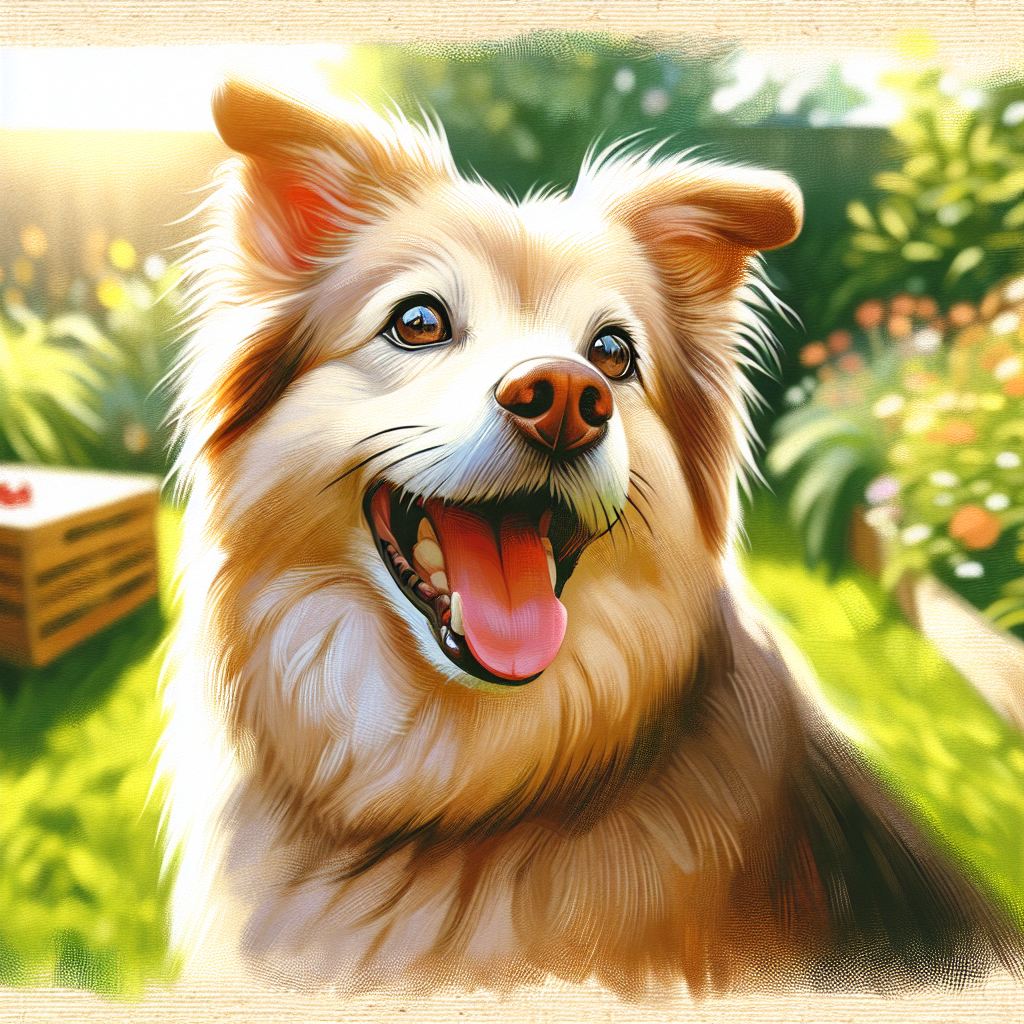Introduction to Fleas in Winter

Ah, winter. The time of year when we cozy up with a hot drink and a good book, hoping against hope that the cold will do us a favor and wipe out those pesky fleas. But do fleas really die in the winter time? Spoiler alert: they don’t just vanish like your New Year’s resolution. Fleas, those tiny, relentless critters, have their own agenda, even when the snow is falling outside. They might not be holding a snowball fight, but they’re certainly not packing their bags either.
Fleas in winter months remain a concern for pet owners. Just because you’re wearing a parka doesn’t mean your pet is off the hook. Fleas are like that old sweater you just can’t seem to get rid of—always hanging around. So, what happens when the temperature drops? Do we get a break from flea survival in cold weather, or do they thrive in ways we might not expect? Let’s dive into this winter tale.
The Resilience of Fleas: A Winter Tale
Here’s the deal: fleas are survivors. They’re like those old-timers in the movies who never leave their hometown, no matter what. Fleas are tough, and they’ve got tricks up their sleeves—or whatever it is fleas have instead of sleeves. During winter, they don’t just disappear. Instead, they adapt. Winter flea infestation is a thing, folks. You can’t just leave them out in the cold and hope they’ll freeze. That’s not their style.
Fleas have been around for millions of years, and they’ve learned a thing or two about sticking around. Even when it’s cold outside, they find a way to keep going. It’s like they’re tiny, unwanted guests at your holiday party, ignoring the fact that they weren’t invited.
How Fleas Survive Cold Weather
Now, you might be wondering—how do fleas survive cold weather? It’s not like they’re wearing tiny flea-sized jackets. Fleas have a knack for finding warmth, and your home is prime real estate. They latch onto your pets, who are like walking space heaters, and make themselves comfortable. Fleas on pets during winter aren’t chilling on a beach, but they sure are chilling on your furry friend.
But it’s not just adult fleas you need to worry about. Flea eggs in winter are another part of the problem. These eggs can lie dormant, waiting for the right conditions to hatch. It’s like they’re playing a long game, waiting for the perfect moment to spring into action. And trust me, when they do, it’s not pretty.
Fleas’ Favorite Winter Hideouts
Let me tell you, fleas aren’t picky. They’ll set up shop anywhere they can find warmth. Your home becomes a flea hotel during the colder months. They love carpeting, bedding, and even the cracks in your floorboards—anywhere they can hide and wait out the cold. Winter is a time when we all want to stay warm and cozy, and fleas are no exception.
If your pet spends time outside, fleas might hitch a ride inside via your furry friend. It’s like they’re getting a free ride to the tropics—your warm and inviting living room. You think you’re bringing in a happy dog; they’re bringing in a flea circus. And it’s not just the adults. The flea life cycle cold months continue as eggs and larvae find their way to the warmest spots in your home.
The Flea Life Cycle During Winter
Speaking of life cycles, let’s talk about the flea life cycle during winter. Now, I know this isn’t the most glamorous topic, but it’s important. Fleas don’t take a vacation. They just modify their operations. Adult fleas might be the headliners, but it’s the flea eggs in winter that are the real sneaky ones. These eggs can go dormant when it’s chilly, but they’re just biding their time. They wait for warmth and vibration—like the kind your pet provides—before hatching.
And guess what? When they hatch, it’s like a flea fiesta in your living room. The cycle starts again, and you find yourself asking, “Do fleas die in the winter time?” Well, not quite. They find ways to keep the party going, even when you’d rather they didn’t.
But don’t lose hope. Winter flea prevention tips can make a difference. Regular vacuuming, washing your pet’s bedding, and using flea prevention products can help. It’s all about staying a step ahead.
In the end, dealing with fleas in winter is part of being a pet owner. It’s not fun, but with a bit of vigilance, you can keep those little pests at bay. So, here’s to you, dear reader. Thanks for sticking with me through this winter tale. Keep your pets warm, and may your home be flea-free. Cheers to that!
How Fleas Survive the Cold Months
Do fleas die in the winter time? Not quite. You’d think they’d just freeze and give up when the temperature drops, right? But no, these little pests are tougher than they look. Flea survival in winter is a real thing. They’ve got their own survival tactics, like hunkering down in warm places or hitching a ride on pets. It’s like they’ve got some secret winter playbook. When you think about it, fleas are like those people who never wear a coat even when it’s snowing outside—they just don’t seem bothered by the cold.
When the temperature dips, fleas slow down a bit. They’re not as active, but they don’t just die off. Eggs, larvae, and pupae can hang out in the environment, waiting for warmer days. Fleas are like those annoying friends who never take a hint to leave. They’ll just hang around until conditions are right. It’s kinda impressive, in a way. In homes, central heating provides a cozy environment for fleas to thrive, making flea survival in winter an indoor challenge.
Indoor Flea Infestations in Winter
Now, let’s talk about indoor fleas during cold months. You see, when it gets chilly, fleas are like, “Hey, let’s move the party inside.” Your warm home becomes their winter getaway. And if you’ve got pets, well, it’s like rolling out the red carpet for them. They’re not just outside pests—they’ve got no qualms about crashing indoors.
So, what happens when you don’t notice them? They multiply. Fast. One flea can turn your living room into a flea circus in no time. And once they’re inside, getting rid of them is a whole ordeal. It’s like trying to stop a leaky faucet with a piece of gum—futile and messy. You’ll find yourself vacuuming every nook and cranny, washing pet bedding, and maybe even considering a flea bomb. But let’s be honest, no one wants to go nuclear in their own home. It’s a battle that requires patience and persistence.
Common Myths About Fleas in Winter
Ah, the myths. Let’s bust some of those myths about winter fleas. People often think fleas are just a summer issue. It’s like, “Oh, it’s cold, so no more fleas, right?” Wrong. That’s just wishful thinking. Fleas don’t pack up their bags and head south for the winter. They’re like that one neighbor who never leaves town.
Another myth? Some folks think if they don’t see fleas on their pets, they’re in the clear. Newsflash: fleas are sneaky. They’re often hard to spot until there’s a full-blown infestation. And if you think you can skip preventative measures in winter, think again. Fleas are opportunists. They’ll take any chance they get to set up shop in your home.
Tips for Preventing Winter Flea Infestations
Let’s dive into some winter flea prevention tips. First off, don’t let your guard down. Just because it’s cold doesn’t mean you can slack off on flea control. Keep up with those flea treatments for your pets. They’re like your first line of defense—without them, you’re asking for trouble.
Regular cleaning is key. Vacuum like your life depends on it. Fleas love to hide in carpets and upholstery, so don’t skip those areas. Wash your pet’s bedding regularly, too. Use hot water—fleas hate it. And don’t forget to check your pets. Give them a good once-over every now and then. It’s better to catch a flea problem early than to deal with a full-blown invasion. It’s not rocket science, but it does require effort.
Natural Remedies to Keep Fleas at Bay
On to natural flea remedies for winter. Not everyone wants to douse their home in chemicals. If you’re looking for a gentler approach, there are some options. Diatomaceous earth is one. Sprinkle it on carpets and let it sit before vacuuming. It’s like flea kryptonite—dehydrates them right out of existence.
Essential oils can also help. Lavender, cedarwood, and eucalyptus are good choices. Mix a few drops with water and spray around your home. But remember, some oils can be toxic to pets, so do your homework.
Lastly, keep your yard tidy. Trim back bushes and clear debris. Fleas love dark, damp environments. By making your yard less inviting, you’re cutting off one of their entry points. It’s all about making your home less appealing to them.
So there you have it. Fleas don’t just vanish when the cold hits. They’re survivors. But with some vigilance and effort, you can keep them at bay. Thanks for hangin’ in there with me through this flea-infested journey. May your home be as flea-free as a freshly groomed poodle.
The Battle Plan: Keeping Fleas at Bay Year-Round
Alright, let’s get down to brass tacks. Fleas, those tiny, hopping nuisances, are not just a summer fling. They’re the unwanted guests that don’t know when to leave. Winter comes, and you might think, “Hey, do fleas die in the winter time?” Well, not exactly. They’re sneaky, adapting little critters. While you’re sipping hot cocoa and watching snowflakes fall, they’re plotting their next move—right in your cozy home.
So what’s the game plan? Well, you need to think of flea prevention in winter as a year-round commitment. It’s like a never-ending chess game. You’ve got to outsmart them at every turn. Regular vacuuming, washing pet bedding, and using flea prevention products can be your first line of defense. It’s not glamorous, but neither is a flea infestation. Trust me, it’s worth the effort.
The Secret Life of Fleas: What Happens Beneath the Snow
Now, let’s take a peek under the snow. Fleas aren’t sitting out there freezing their little butts off. They’re resourceful, finding warmth and sustenance wherever they can. Sure, the cold can put a damper on their parade, but it doesn’t wipe them out. They find shelter in warm places—like your home. It’s almost like they’re starring in their own secret soap opera.
So, how do fleas survive cold weather? They latch onto warm-blooded hosts, like your pets, and find the warm nooks and crannies in your house. They’re not just surviving, they’re thriving—having little flea parties when you’re not looking. It’s a wild world beneath the snow, with fleas making the most of it.
DIY Flea Control: Simple Hacks You Can Try at Home
Want to fight back without breaking the bank? You don’t need to empty your wallet on fancy products. There are homemade flea remedies that work like a charm. A little elbow grease and some common household items, and you’re on your way to a flea-free life.
Think vinegar, lemon juice, and essential oils. These can be your secret weapons. Mix them up and spray them around. It’s like you’re a DIY genius, crafting potions to keep those fleas at bay. You’ll save money and feel like a flea-busting wizard. Just remember, consistency is key. Keep at it, and those fleas won’t know what hit them.
Fleas and Your Pets: Signs, Symptoms, and Solutions
Now, let’s talk about your furry friends. They’re not just pets; they’re family. And they deserve to be flea-free. But identifying fleas on pets can be a bit of a challenge. It’s like they’re tiny ninjas, hiding in plain sight. Check for signs like excessive scratching, red bumps, or flea dirt.
Once you’ve spotted them, it’s time to take action. Bath time can be a great start. Use a mild shampoo, and maybe add a little apple cider vinegar to the rinse water. It’s a simple solution, but it works. And don’t forget about regular grooming. It’s not just about looking good—it’s about keeping those pesky fleas at bay.
Winter Flea Myths Debunked: Truths You Need to Know
Alright, let’s bust some myths. Winter isn’t the flea apocalypse everyone thinks it is. Do fleas die in the winter time? Not really. They just hide. Winter flea infestation signs can be subtle, so stay vigilant. It’s easy to think they’re gone when they’re just waiting for their moment.
Flea myths and facts can be tricky. People think fleas can’t survive the cold, but they’ve got tricks up their sleeves. They’re resilient little buggers, holding on until the weather warms up. So, don’t let your guard down. Keep up with your flea prevention routine, and you’ll be a step ahead.
Thanks for sticking with me on this flea-ridden journey. You’ve got the tools and the know-how to keep your home and pets flea-free. Stay warm, stay vigilant, and remember—you’re not alone in this fight. Your pets will thank you, and maybe, just maybe, you’ll enjoy your hot cocoa a little more, knowing those fleas don’t stand a chance.
Quick Takeaways:
Fleas are the ultimate survivors, even when it’s cold outside. So, do fleas die in the winter time? Nope, they stick around like uninvited houseguests. Fleas in winter months don’t just vanish; they adapt and find ways to thrive. Your cozy living room becomes their winter resort. They’re clever little critters, using your pet’s warm fur as a vacation spot or hanging out in your carpet until the sun shines again.
Winter flea infestations can happen when you least expect them. Flea eggs in winter don’t just freeze and die. They wait it out, ready to hatch when the conditions are right. It’s like they have their own little survival guide for cold weather.
To combat this, you need some winter flea prevention tips up your sleeve. Regular pet grooming, vacuuming, and washing pet bedding can help. Natural flea remedies for winter are also an option—simple stuff like using diatomaceous earth around the house or making a homemade flea spray with essential oils.
Staying ahead of the flea game means understanding the flea life cycle during cold months. It’s a year-long battle, not just a summer skirmish. Keep your home and pets flea-free by being proactive, not reactive. Fleas might be crafty, but with the right knowledge and tools, you can keep them at bay.
FAQs:
1. Do fleas die in the winter time?
Fleas don’t just keel over when it gets cold. They find warm spots to hide—like the fur on your pets or cozy spots in your home. They’re not fans of the cold, but they’re experts at winter survival.
2. How can I prevent a winter flea infestation?
Regular cleaning is your best defense. Vacuum carpets and wash pet bedding often. Use natural remedies like diatomaceous earth in your home. Keep your pets groomed and check for fleas regularly. A little prevention goes a long way.
3. Are fleas on pets during winter a common thing?
Yes, fleas on pets during winter are common. Your pets are warm and cozy, which makes them the perfect host for fleas. Regular checks and grooming can help keep them flea-free even when it’s cold outside.
4. What’s the best way to deal with flea eggs in winter?
Flea eggs in winter can be tricky. They lie dormant, waiting for warmer weather. Regular vacuuming and washing your pet’s bedding can help remove them. Using flea prevention products year-round is also a good idea.
5. Are there any myths about winter fleas?
Absolutely. One big myth is that fleas die off in winter. Another is that indoor fleas during cold months are not a problem. Both are false. Fleas are great at surviving and can be a problem any time of year, especially if they find a warm spot to hunker down.
Conclusion:
So, do fleas die in the winter time? The short answer is no. They’re like the houseguests who never seem to leave. But don’t panic. With some know-how and a few winter flea prevention tips, you can keep your home and your pets flea-free. Remember, it’s not just about waiting for the cold to do the work. Be proactive, keep an eye on your furry friends, and don’t slack on the cleaning. You’ve got this. Thanks for sticking with me through this flea-infested journey. Stay warm, stay vigilant, and may your winter be as flea-free as a cat’s conscience.
References:
1. https://www.aikenpest.com/blog/2021/december/what-happens-to-fleas-in-the-winter-/
2. https://www.lookoutpestcontrol.com/household-pests/fleas-during-the-winter/
3. https://www.petmd.com/dog/parasites/do-fleas-survive-winter
4. https://www.wondercide.com/blogs/news/fleas-in-winter-what-you-need-to-know-faq
5. https://tickkillz.com/2017/10/09/as-temperatures-decrease-do-fleas-remain-an-issue/
Our solution eradicates fleas on contact without harmful chemicals, ensuring a safe environment for your pets and family. Easy to use and highly effective, SayByeBugs helps you maintain a flea-free home. Learn more and order today at SayByeBugs.com
Our solution eradicates fleas on contact without harmful chemicals, ensuring a safe environment for your pets and family. Easy to use and highly effective, SayByeBugs helps you maintain a flea-free home. Learn more and order today at SayByeBugs.com








